The sun setting gently in the distance. The sand sifting through your toes. The waves crashing slowly against the shore. These are the images that often come to mind when brides and grooms daydream of a beach wedding. And while there is a mystical sort of romanticism about the beach, there is also a harsh reality: nature. Thankfully, there are ways to prepare for nature and it’s challenges. Here are a few things to consider when planning your dream beach wedding:

Wind
Ironically, when one daydreams of the beach, they frequently leave out the gusts of wind – which are dramatically higher around water than other wedding settings. Brides, who have spent hours on their hair, and members of the wedding party, who have spent weeks preparing the DIY arch and wedding drapery, may be disappointed to find their hard work ripped away in a matter of minutes. However, there is a way to lessen the damage done by preparing ahead of time. Careful consideration should be given to all hair styles, clothing, and wedding decor. If it cannot withstand a small fan, it will not survive high wind speeds. This leads brides/grooms to more practical choices when it comes to appearance. For females, consider long curls/waves that will appear effortless in a heavy breeze or wind; braids also tend to withstand higher gusts and can keep your hair out of the way during critical points in the ceremony. Dresses should be able to flow gracefully in the wind – the longer the better – unless you are willing to risk a wardrobe malfunction. Wedding decor should be securely fastened to heavier objects to prevent any drifting or blowing. In Tampa, wind speeds are higher in the fall and winter, so consideration should also be given to the time of year.
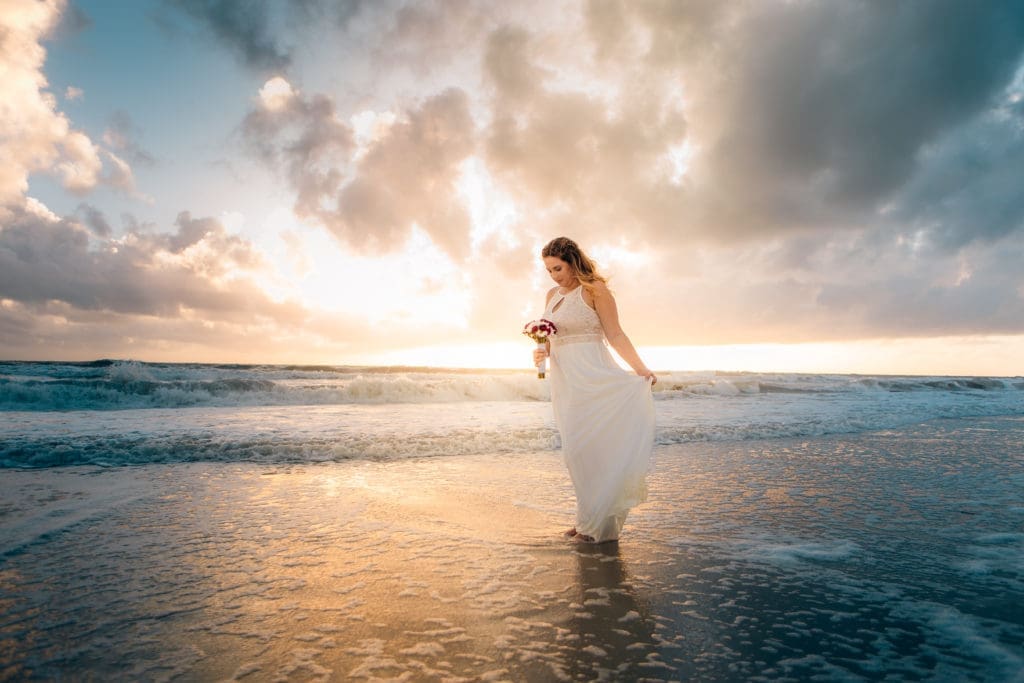
Water
Although it would appear obvious, many brides/grooms fail to factor in water when planning their beach wedding. Those romantic strolls down the beach in your dress and tux can become cumbersome if not planned appropriately. Again, attention should be given to the type of apparel, especially if you intend on getting in the water for some intimate photos at the end of the ceremony. For brides, this would mean choosing a flowy gown over a form-fitting wedding dress. The dress will move better in the water and, when dampened from walking on the beach, will still appear elegant. For grooms, consider shorts or pants that can roll up.
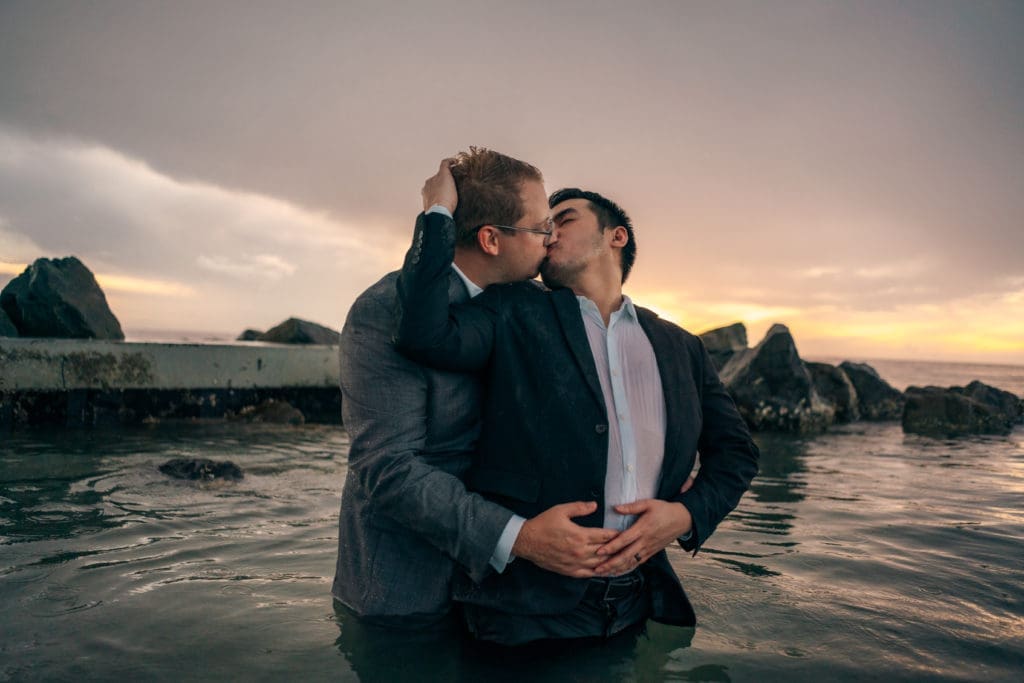
Beach sand and debris
Thought should also be given to the sand and debris beneath your feet. Although the sand will appear beautiful and clean in photos, the reality is that sand collects a variety of other debris with it – including buried trash, seaweed, shells, and small live animals (such as crabs). Whatever is at the bottom of your dress or pants will become a collector or net of sorts for anything you would encounter in the sand. In that regard, lace should be avoided, as it often becomes snagged or snarled in objects found on the beach. Satin or chiffon tend to fend better in the beach conditions than fabrics such as tulle or organza. You should also consider that the beach itself collects dirt which can and often will discolor the bottom of your garments.
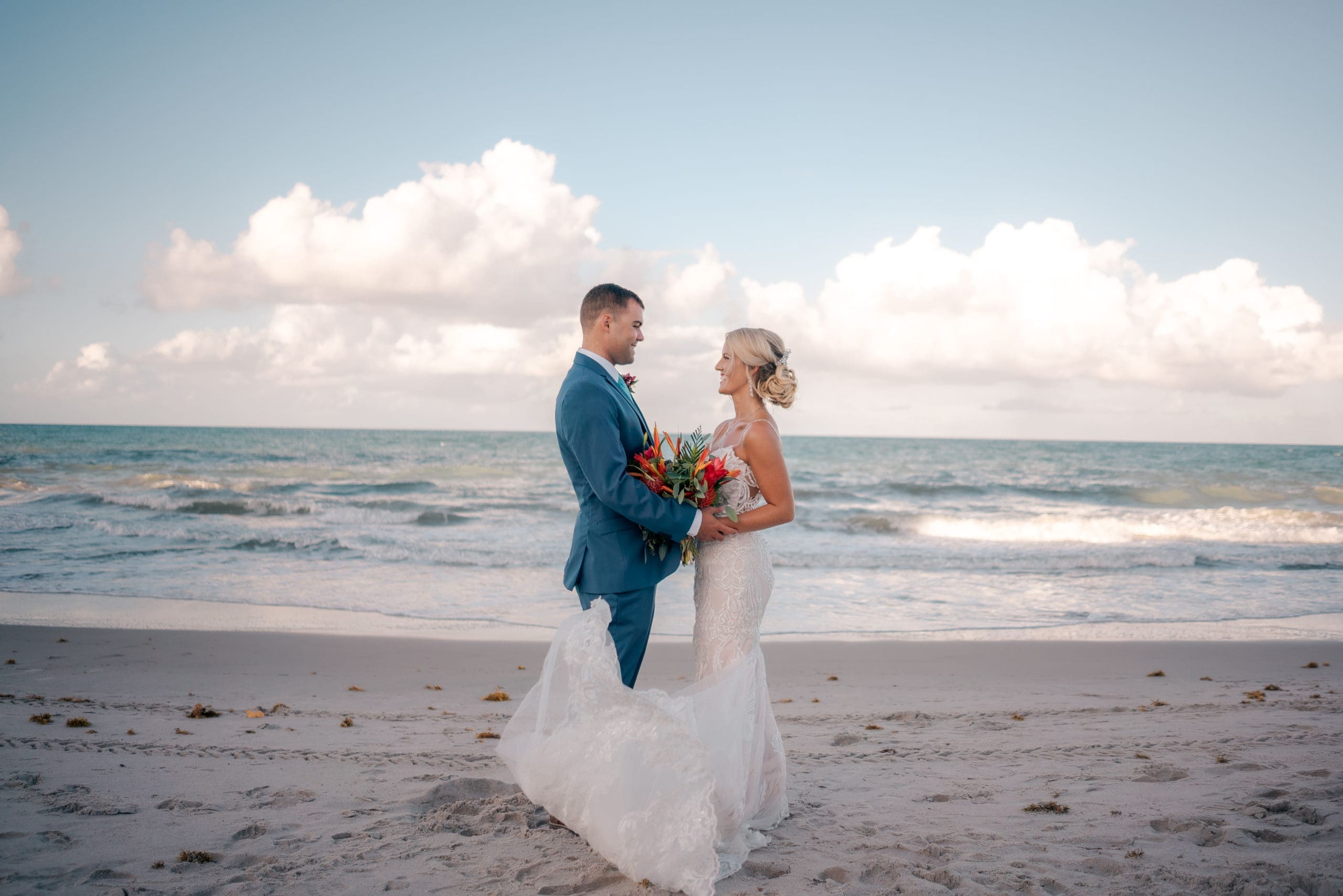
Direct Sun
Depending on the time of your wedding, the sun may become a hindrance to guests and the photographer. The beach often lacks any viable shade or covering, unless you are bringing a tent or canopy. Chairs and other decor should be placed strategically to capture the best lighting. In the evening hours, they should be angled to face the sunset (in order to capture the beauty in photos). During the day, chairs and decor should be angled away from direct sunlight to avoid blinding your guests during the ceremony. If you are local, keep in mind that the Gulf is only able to get sunset views; the Atlantic coast will only be able to get sunrise.
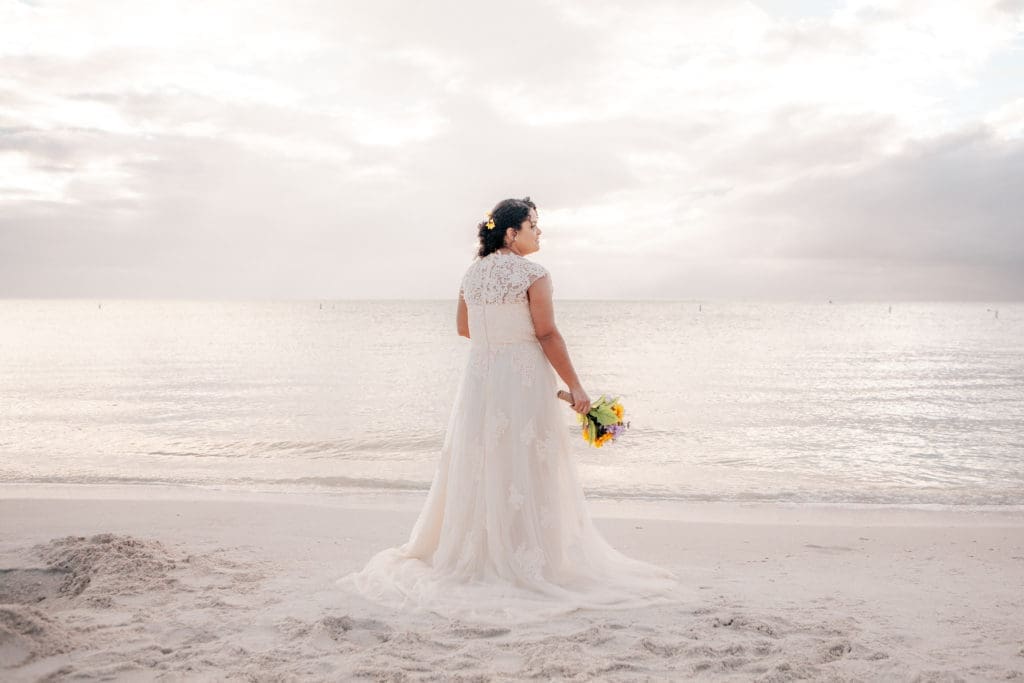
Uninvited Guests
The majority of beach weddings occur on public beaches. In that regard, you should consider that the beach will be open to the general public and you may have some gawking guests, scantily clad, in near vicinity. You also may find some unwanted guests in the form of seagulls and other pesty birds. To limit the amount of uninvited guests, brides and grooms should preemptively select the best location by visiting the beach during their planned day and time. Look for areas of the beach that are less frequented – often they are further away from the entrance and may contain more natural elements (such as rocks or trees). Pay close attention to the amount of birds and other animals that may also appear at your ceremony.
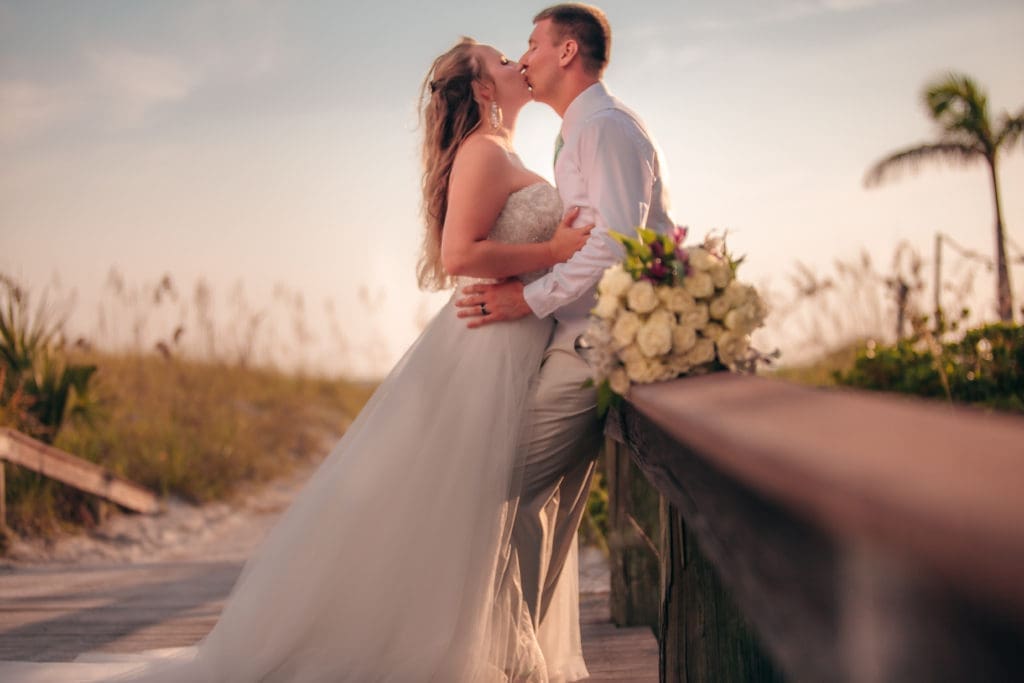
Overall, beach wedding are romantic and intimate in nature. Although there are challenges to consider, the overall outcome outweighs any issues that might arise. Careful planning can help brides/grooms avoid many of these issues. Also, consider hiring a beach wedding service, as they are often more experienced with the local beaches and know what to avoid.
Want to learn more, feel free to contact me. I look forward to hearing from you.